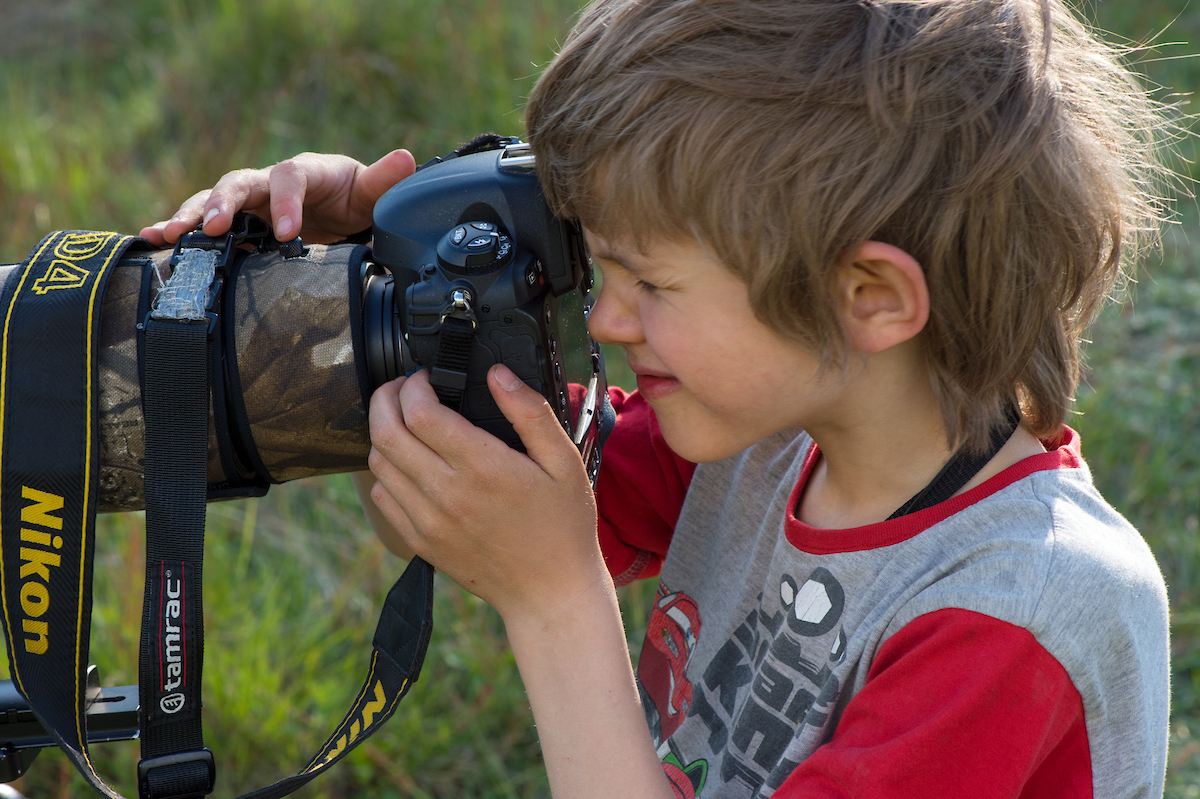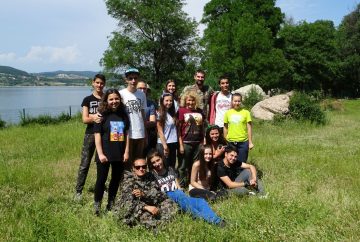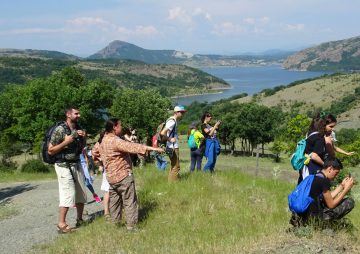Renowned Bulgarian wildlife photographer Bogdan Boev imparts his knowledge and passion to a group of young camera enthusiasts in the beautiful Studen Kladenets nature reserve.

An ideal learning environment
Young and aspiring Bulgarian wildlife photographers picked up a host of techniques, tips and tricks in the Rhodope Mountains rewilding area recently. To celebrate World Environment Day (June 5), lucky members of the “From Black to White” photographic club in the town of Kardzhali were given an exclusive training session by renowned Bulgarian wildlife photographer Bogdan Boev. The group was captivated by Boev’s skill and passion for capturing wildlife behaviour and sharing his imagery to showcase the wonderful natural heritage of the Rhodope Mountains.

The photographic workshop, organised as part of the ongoing LIFE Vultures project, took place in one of the best places for wildlife photography in the Rhodope Mountains – the Studen Kladenets Reservoir. Part of the Rhodope Mountains rewilding area, this beautiful nature reserve is home to an array of wildlife, including hundreds of red and fallow deer, black storks, and a small herd of European bison. It is also home to several species that are more elusive and harder to capture on camera – the griffon and Egyptian vulture.
Messages from the maestro
In wildlife photography, as in any other art form, there are certain written and unwritten rules. Yet Boev taught his workshop participants that sometimes it’s acceptable to break those rules.
“In art it’s frequently better to have your own vision rather than stick to conventions and norms,” he says. “Otherwise you run the risk of producing the standard images that every other photographer is shooting.”
Boev also advised his students not to obsess over waiting for the perfect photo.
“We need to be mindful of the privilege of spending time in nature,” he says. “Regardless of your location – whether its the local park or in the Rhodope Mountains – enjoy what you are doing and have fun doing it. Obviously the biodiversity here in the Rhodope Mountains means this is a place which offers unique photographic opportunities.”

Another of Boev’s key messages was the need for patience. He explained that wildlife photographers rarely get a great shot in just a few hours.
“Wildlife photography is all about patience,” he says. “You may need to return to the same spot time and time again, and wait for hours on end, before you are rewarded with a unique image.”
Last but not least, Boev stressed the importance of knowing your wildlife subject.
“Knowing a species and its behaviour can mean the difference between capturing that fleeting wildlife moment or seeing it disappear,” he says. “Those that wait and contemplate their subject, and study its behaviour, will reap the benefit sooner or later.”
Wrapping up
The Studen Kladenets workshop also focused on ethics in wildlife photography and how to avoid animal disturbance. Boev encouraged participants not to hunt for images, but rather to become wildlife ambassadors. According to the Bulgarian photographer the powerful images that photography can generate can be a critical communications tool for nature conservation.

During the presentation Boev shared fascinating stories from his time spent photographing wild animals in Poland, Finland and the Eastern Rhodopes. According to Bogdan, the Eastern Rhodopes are one of the best and most beautiful places to photograph wildlife because an exceptional diversity of birds and other species is contained in a relatively small area.
Boev finished by urging young wildlife lovers living in and around the Rhodopes to grab every opportunity to become acquainted with the area’s wildlife, and in doing so to become more skilled at capturing them on camera.
Starting in 2016, the five-year LIFE Vultures project was developed by Rewilding Europe, in collaboration with the Rewilding Rhodopes Foundation and a range of other partners. Focusing on the Rhodope Mountains rewilding area in Bulgaria, as well as a section of the Rhodope Mountains in northern Greece, the aim of the project is to support the recovery and further expansion of the black and griffon vulture populations in this part of the Balkans, mainly by improving natural prey availability, and by reducing mortality through factors such as poaching, poisoning and collisions with power lines.
